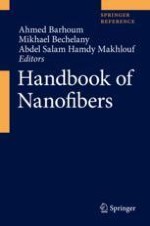2019 | OriginalPaper | Chapter
20. Nanofibrous Scaffolds for Tissue Engineering Application
Authors : Sakthivel Nagarajan, S. Narayana Kalkura, Sebastien Balme, Celine Pochat Bohatier, Philippe Miele, Mikhael Bechelany
Published in: Handbook of Nanofibers
Publisher: Springer International Publishing
Activate our intelligent search to find suitable subject content or patents.
Select sections of text to find matching patents with Artificial Intelligence. powered by
Select sections of text to find additional relevant content using AI-assisted search. powered by
